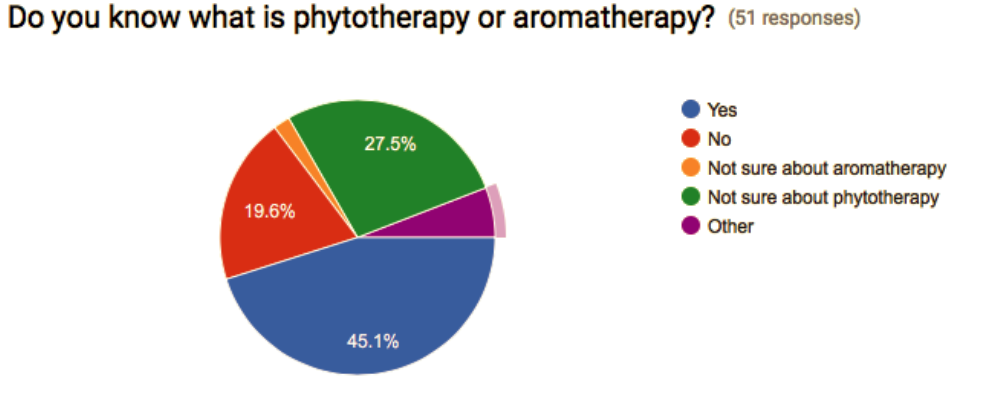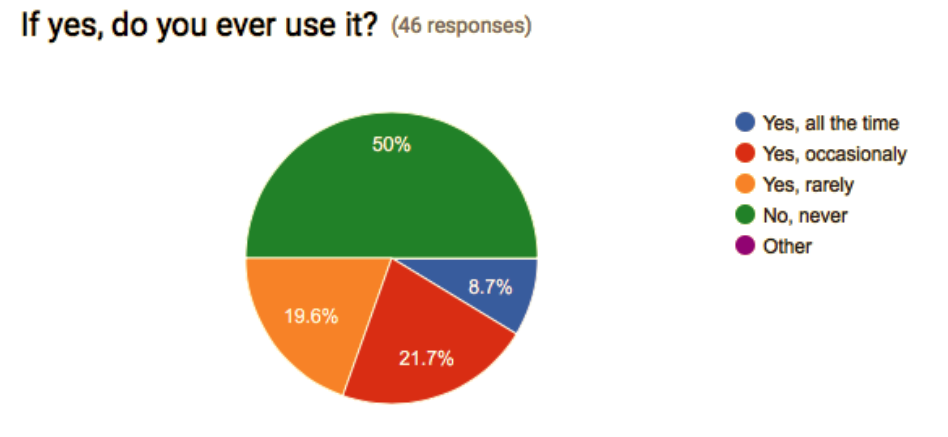In 2016, I presented a conference on the uses of essential oils for chronic pain, injuries, and inflammation. Before delving into my knowledge, I wanted to understand people's views on aromatherapy, particularly in the sports field. So, I created a survey and shared it, awaiting responses. Fifty-one people participated, and the results were fascinating.

One comment caught my attention: "Sounds like bullshit."

Most athletes knew about aromatherapy but weren't using it. I had to dig deeper to understand why."I'm only interested in treatments backed by sufficient scientific evidence.""Many articles argue that phytotherapy is either a placebo or a cure-all. It's hard to form an objective opinion.""I was given a comfrey and cayenne cream by an herbalist for a muscle overuse injury, but I discontinued use due to concerns about disrupting my natural pain signals."Interestingly, people thought they knew about essential oils but were filled with misconceptions or doubts about their effectiveness.« If there is sufficient scientific evidence for treatment with plants, then yes I am interested »
What is Aromatherapy?
Aromatherapy is the use of essential oils (EOs) for therapeutic purposes.
EOs are the result of distillation, a process that extracts volatile essences from aromatic plants. It takes a significant amount of fresh plants to produce the 5-15ml of EO you buy, and plants with fewer volatile compounds will be more expensive. For example, "it requires 6,000 pounds of melissa plant to distill just a single pound of melissa essential oil."
Important to Remember : Essential oils are not natural products in the classical sense. They are highly concentrated and powerful. This is crucial to remember: just because a product comes from a plant doesn't mean it's harmless.
IF IT CAN BE DANGEROUS, CAN I STILL USE THEM?
Some people apply EO without any dilution. THIS IS WRONG.
Some people think they can put EO in their eyes. THIS IS WRONG.
Some people add a few drop of EO in their water or in their coffee. THIS IS WRONG.
YOU SHOULD NOT TO THAT. EVER.
As their names suggest essential OILS are lipophilic which means they cannot be diluted in WATER. They are hydrophobic.
EO must be diluted in a vegetable oil. They need a carrier unless you are doing an inhalation. Then yes, you can definitively use them for (non-)therapeuthic purposes.
There are three common ways for absorption:
- Skin: when receiving a massage with EO or applying an ointment
- Inhalation or Diffusion: for therapeutic purposes
- Internal: through swallowing or absorption through vaginal or rectal suppositories
When apply on the skin EO compounds travel through the membrane through a process called diffusion before reaching the bloodstream. It is important to remember that:
- EO compounds can accumulate in fat tissues and be released slowly over time
- EO compounds are highly volatile
- Skin thickness varies across different body parts, affecting absorption rates
- Only ~10% of applied EOs actually reach the bloodstream
To be effective, we want them where we need them most.
- There is a huge variabiliy of EO compounds entering the bloodstream and hence huge variability in plasma concentration between person, due to metabolism, hydration of the skin, temperature, amount of fat vs muscle etc
Finally internal use of EO requires A LOT OF precautions. In the world of aromatherapist some will argue that EO cannot and shouldn't be ingested for any reasons. Some will use it only for culinary taste (so very small concentration) and other will use it for therapeutic reasons (hence higher concentration). The internal uses of EO also differs strongly from countries to countries and I personally do not recommend internal use of EO for people unless they know exactly what they are doing or they have been talking with a certified aromatherapist.
Why?
Because one essential oil can have has much as 100ish different chemical compounds. Hence, one EO isn’t equal to one compound and to one biological effect. Also, one plant can have different varieties ... like lavender that has approximatly 40 differents varieties or mint that has around 20 or eucalyptus that has over seven hundred differents species. The composition of an EO will vary depending on the plant, the variety, the climate where the plants has grown, the amount of precipitation during the year, etc. Which means that where your EO comes from matters a lot.
If your friend or your dad or your mom tells you "eucalyptus is great for cough" you now understand why this statement doesn't make any sense. Which eucalyptus? globulus? radiata? citriodora? polybractea ct cineol? camaldulensis?
Dr Petra Ratajc, biologist and researcher, explains that there is approximately 37,2 trillion cells in the body. So in theory how much melecule could be in a drop of EO? She found that theoretically there are ~132 quintillion molecules of limonene in 30miligrams (~1 drop) of an EO.
JUST SAYIN’ ~132 quintillion molecules in one drop. BE CAREFUL.
Remember this was an 'ideal' calcul to know of how much molecules could be in one drop of EO. Dr Petra Ratajc chose to calculate it with limonene so this is not how much limonene you actually find in EO. Her point was that if ALL chemical compounds of an EO could enter the circulation (which means 100% of absorption) then we would have 4 million of molecules/cell (!).
Now to put that into perspective she also explains that we have more that 40 million of proteins per cell hence a ratio 4/40 = 0,1. Also, it is not because a compound reach a cell that it will have an effect.
Oh and also, 100% absorption is impossible, unless doing intravenous.
Of course chemical compounds of essential oils are neither all known nor had been studied science. Science does explain a lot of how and why EO compounds work in our body, but there is also an extensive 'traditional' and 'empirical' knowledge of the use of EO.